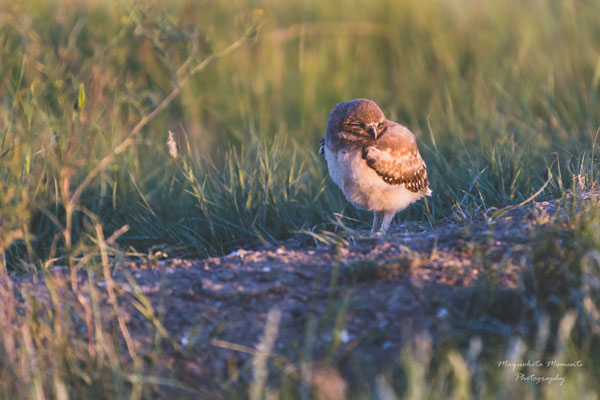Bailey Sutherland, Daily Herald
It is now the end of July, which means young burrowing owls have begun to leave their nests. After being carefully tended to by their parents, they are now independent and ready forage for themselves.
Late July and August is a great time of year to spot the owls out and about or perched on fence posts, but it is also a dangerous time for the juveniles. Kaytlyn Burrows, a Nature Saskatchewan Habitat Stewardship Coordinator, says because the juvenile burrowing owls are inexperienced at hunting, they are at a great risk of collision with vehicles while foraging for food on the road and in the ditch.
“At dusk, the road surface tends to be warmer than surrounding grasslands, attracting many small insects and rodents and as a result, young owls are also attracted and they begin searching for prey”.
Motorists can prevent collisions by reducing their speed and keeping an eye out for burrowing owls on or near the road. They can be identified by their mottled brown and white feathers, their stilt-like legs, and their bright yellow eyes. The birds are about 9 inches, but they have large wings compared to the rest of their body. They are commonly found in grasslands and will use the burrows of badgers, ground squirrels, and other burrowing mammals for nesting.
The burrowing owl is an endangered species in Canada, their numbers have declined significantly over the past three decades. A 2015 estimate suggests that their population in Canada is as low as only 270 owls, with around 100 of those thought to breed in Saskatchewan.
Since 1987, Operation Burrowing Owl has aimed to conserve the remaining parcels of land used by the animals in Saskatchewan. Through voluntary landowner agreements, the program also monitors the population of this endangered species. Currently, just over 350 private landowners participate in the program and are conserving approximately 150,000 acres of habitat.
If you spot burrowing owls on your land, or just happen to see one, please call 1-800-667-HOOT (4668).
Kaytlyn Burrows, says, “you will be helping to monitor the population and aid with conservation efforts.”


